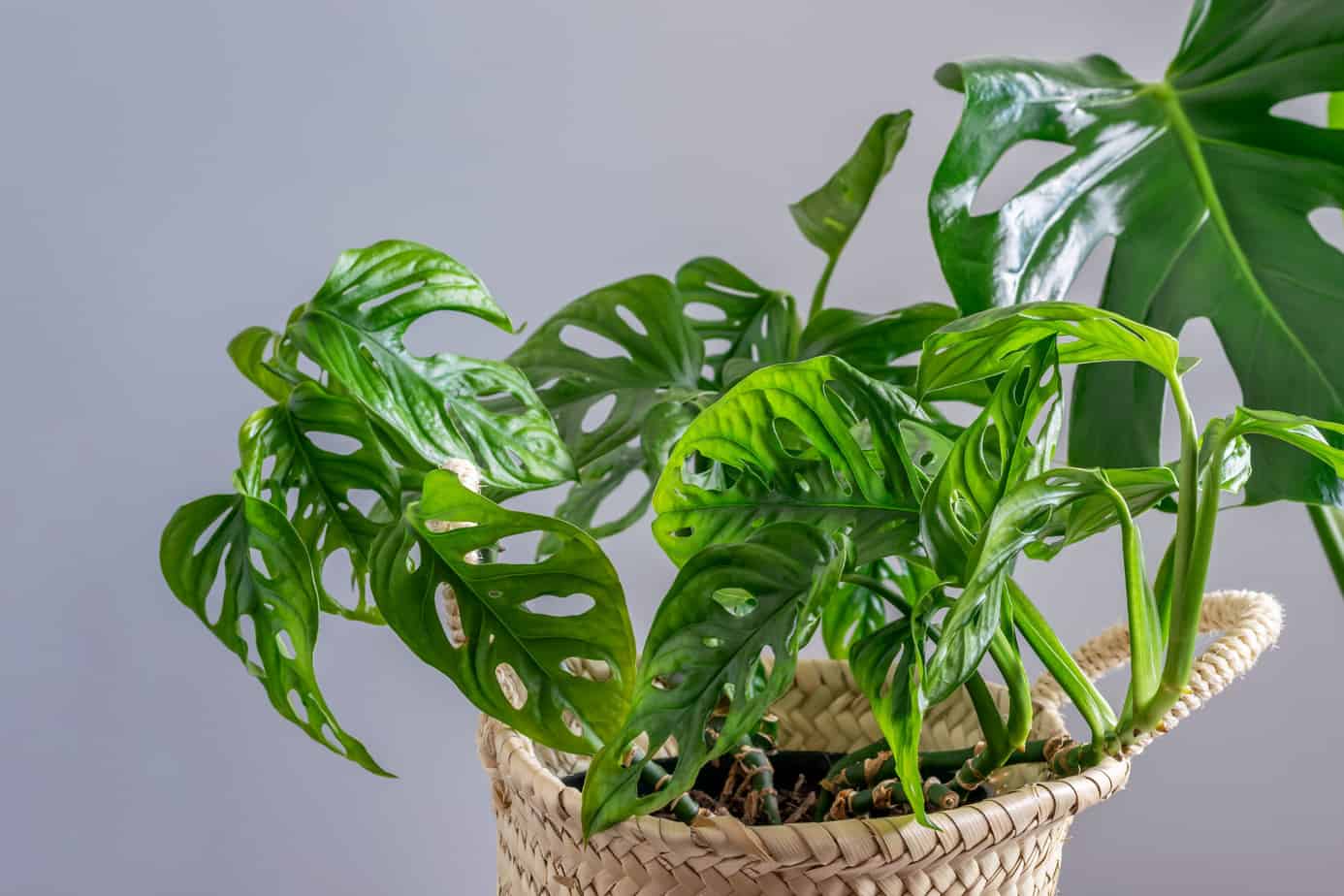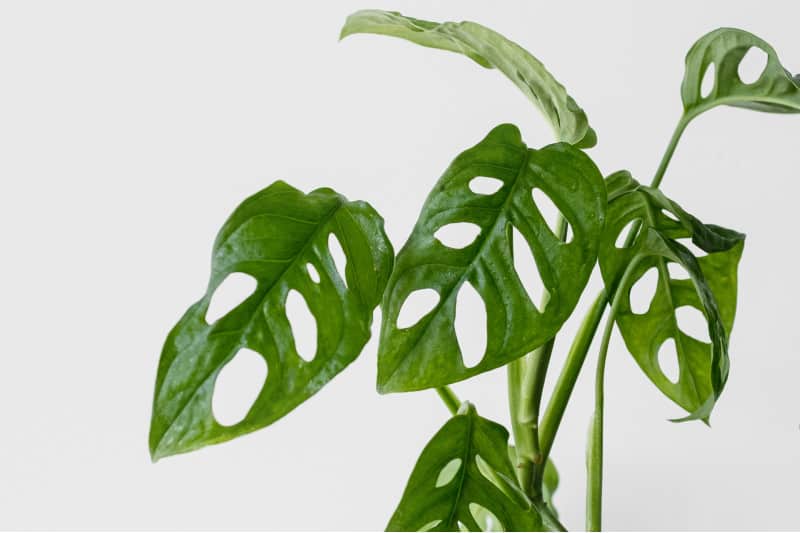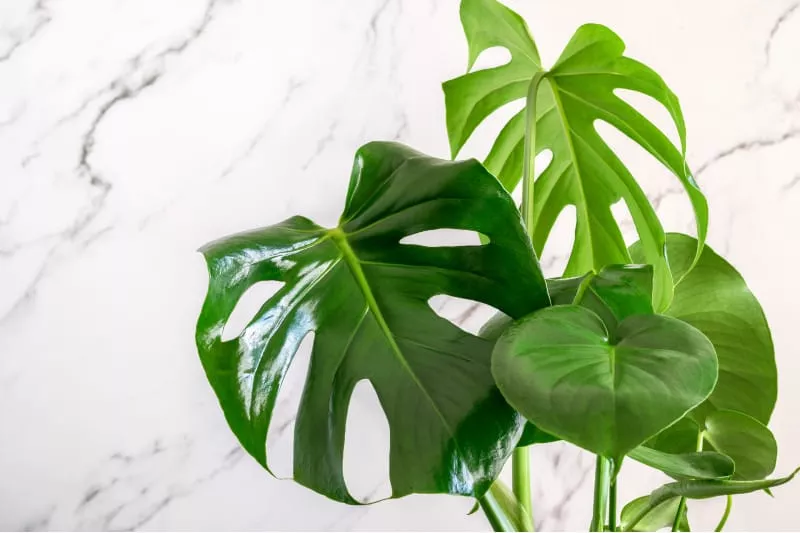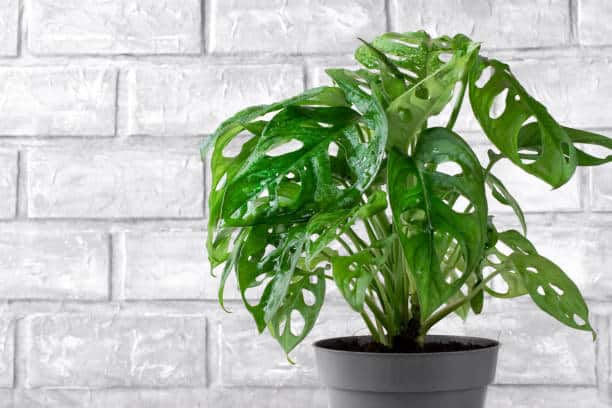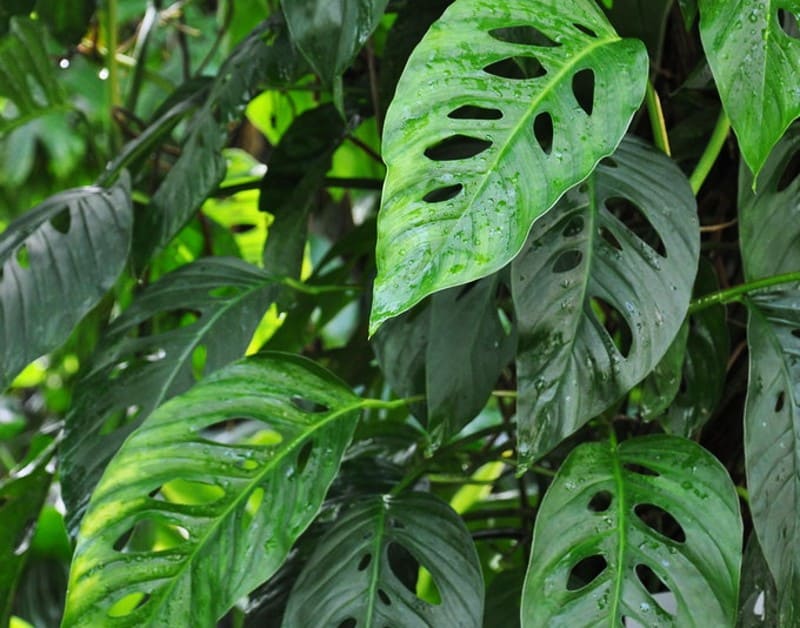No products in the cart.
Table of Contents
Escape to a tropical paradise with the Monstera Epipremnoides plant in your home.
You can turn your living space into a haven added to your other houseplant collection with the exotic plant. The foliage is one of nature’s most precious gifts to create a green wonderland you can call home. Today we are going to help you take care of this mysterious plant.
As it is also known, the Monstera Esqueleto or Swiss Cheese plant is endemic to Costa Rica. The flowering plant is a perennial and a member of the Araceae family. When you have one of these plants in your home, you have one of the most versatile ones in the New World Tropics.
When looking at the Monstera Epipremnoides vs. Adansonii (a ubiquitous Swiss cheese monster ), the former is the bigger brother with a bigger leaf size and just as holey, looking like a piece of Swiss cheese. The plant is an evergreen with distinctive aroids in the inflorescence called the spandex covered with a spathe.
However, the Epipremnoides are closely similar to Monstera Dilacerata due to the similarity of their leaves.
Mix it with your other philodendrons, which resemble the same foliage color.
Monstera Epipremnoides Classification
| BOTANICAL NAME | Monstera Epipremnoides |
| COMMON NAME | Swiss Cheese Plant |
| PLANT TYPE | Perennial |
| BLOOM TYPE | Spring |
| LEAF COLOR | Evergreen |
| MATURE SIZE | 10 Feet Inside and 30 Feet Outside |
| NATIVE AREAS | Costa Rica |
| SUN EXPOSURE | Indirect Light |
| SOIL TYPE | Moist with Good Drainage |
| SOIL pH | Neutral |
| TOXICITY | Pets |
Monstera Epipremnoides Care Basics
You are interested in getting this extraordinary yet trendy, unusual-looking outdoor plant. But how do you care for it? It would be best if you first decided where you plan to plant it as it has big leaves. When fully matured, it has a particular flower. You can find everything you need to know about this exotic plant to ensure it remains healthy.
Best Potting Mix
The Swiss Cheese plant doesn’t tolerate soggy soil, which needs to be well-drained. Leaving it soggy leads to root rot fast, and an excellent aroid soil mix you can use:
- Coco Coir
- Perlite
- Pine Bark
- Pumice
- Sphagnum Moss
- Clay Pebbles
You can use twice as much of the pine bark as it is chunky to aerate the soil, and the soil consists of a high amount of organic matter.
Watering Needs
You only need to water the Monstera Esqueleto once a week, but only make it slightly damp and, if very wet, extend the watering time. Also, make sure the water drains out through the soil mixture. If the water comes out of the pot, it is a good indicator of enough drainage.
Ideal Lighting
Growing in dense forests, it prefers indirect light and only gets dappled with natural sunlight. Never grow it in direct sunlight, but make sure it receives up to six hours of sun but not more, as it can burn the leaves. It’s best placed at an east-facing window for planting inside the home to get direct light in the morning.
Humidity and Temperature
The good news is that you plant the Monstera Epipremnoides outside with temperatures between 55°F – 80°F (13 °C – 27°C). You can grow them in mild to cold climates, but they are found at higher elevations; for the plant, high humidity is crucial.
When displaying your plant in the home, a humidifier or a pebble tray below the pot can help. Alternatively, you can place a lot of other houseplants together with it.
Fertilizer
Another thing that you will love is that the plant only needs frequent fertilizing, but it needs to be high-quality food. The fertilizer must not have a high salt content as it damages the root, causing the plant to die. You can feed the Swiss Cheese plant three times a year or skip it entirely if you want it to grow at its own pace.
We suggest using a slow-release granular fertilizer. If you decide to use a liquid one, always consider the balanced N-P-K. The plant thrives on magnesium, so choose one with a good Mg level. Before fertilizing your plant, please give it some water to help make the absorption easier.
Propagation
The best time to propagate a Monstera Epipremnoides is in spring, as it grows more actively at this time. The same applies to cuttings. When doing this, you need to cut your plant carefully, including the node.
The reason is that the nub later becomes the aerial root, helping it to establish itself in the ground. Choose a stem with at least three leaves to help set up a new plant. There are also four main ways to achieve this. The first is root cutting and placing it in clean water, preferably distilled.
- The first option you need is a cutting with the node placed in clean water, preferably distilled.
- The second option is to use sphagnum moss to help root the cutting and ensure it is slightly wet with water. You can do this by soaking it in water and pressing it several times. Also, make sure it stays somewhat moist for a couple of days.
- The third method is placing the cutting into moist soil. After a couple of weeks, you can gently remove the cutting to see if the roots have grown.
- The last technique is placing the rooted cutting into perlite, a volcanic substance containing no pathogens and pH neutral.
Growth Zone
When planting the Swiss Cheese plant, the best place to grow it is in zones 9b-11.
Epipremnoides Monstera highly appreciates a frost-free and tropical environment. They can also thrive indoors with moderate light and average humidity. They can grow up to 6-8 feet tall and 1-3 feet wide when mature. Like tropical houseplants, they prefer moist soil, no overwatering, indirect sunlight, and regular pruning when needed.
Potting and Repotting
Whether planting your Monstera Esqueleto or re-potting it, you must find a perfect container. If you need to re-plant your plant as it has outgrown the pot, it helps to find one bigger. You need to buy one three times its size and choose the next size to give your plant a comfortable home to grow.
The important thing is to buy one with enough drainage holes to prevent root rot. Transplanting usually occurs every three years and depends on how fast it grows.
Furthermore, make sure to do this in spring or summer by following its natural cycle. Moreover, water it well the day before to soften the soil. Once planted, water it well and leave it for a couple of days to settle in.
Another essential thing is never to fertilize it and leave it for up to 15 days before taking this step.
Monstera Epipremnoides Varieties and Similar Plant
You can find different varieties in the Monstera Epipremnoides family if you want to add them to your houseplant collection.
Monstera Obliqua
This smaller species grows on any wood substrate and has an oblique leaf base with a shape ranging from narrow to ovate.
Monstera Deliciosa
Is a widely cultivated species for ornamental display. It has dark leaves with a slow growth rate. This is a famous indoor plant that tolerates low to medium-light settings.
Adansonii Monstera
Also known as the Monstera Adansonii, it is another Swiss Cheese Plant. The Monstera Epipremnoides vs. Adansonii has large heart-shaped leaves with holes and is just as easy to grow. It can grow up to 60 feet and needs support to climb.
Furthermore, it has smooth, bright green leaves compared to the Monstera Epipremnoides, which have a leathery texture. Moreover, the Epipremnoides have holes starting from the middle and extending to the edge. At the same time, the Adansons leaves have fewer and smaller holes.
Monstera Lechleriana
The Lechleriana has long greeneries sticking out and is a terrestrial creeper. It is another native plant to Costa Rica with a tight cluster of leaves and broader space between its small holes.
Monstera Epipremnoides Diseases & Pests
When you have this plant in your home, you will find it very tolerant of diseases and pests. Some typical problems are:
The leaves are turning yellow and dry, caused by too much sunlight. You can clip the dead leaves and move them to a shadier area. Another reason could be soggy soil; it is best to leave it to dry out before watering again.
Another problem is brown edges on the leaves, which means the plant is dying. The air could be too dry inside your living space as it prefers humid conditions. Another concern is that the plant is too dry, and best to check the soil.
Rotting roots will have a white substance around them, so you are overwatering your plant. You can trim the unhealthy root and let the plant dry to salvage what you can. If it is beyond repair, you can cut one of the nodes to propagate a new one.
Frequently Asked Questions
Variegation is rare, and the chance of producing variegations is about 1:100’0. Therefore, to get a variegated Monstera plant you will need to make 100k cutting to create a new plant.
The difference is the color, perforation, and size of the leaf. The plant has bigger leaves with a light green shade and leathery texture. At the same time, the perforation starts midrib reaching the entire edge of the foliage.
The plant genus is Monstera, but several species are in the category familiarized as Swiss Cheese Plant. You can find it in the Monstera Epipremnoides and Deliciosa, as the leaves have holes similar to the cheese
The Monstera Epipremnoides can be bought to any local garden shops or nursery. If you want quality houseplant and hassle free delivery, you can get it from Plantly. We’ll surely provide you excellent service and care tips guides too.
Whether you want to buy, sell or simply reach out to other plant enthusiasts, Plantly is the right place to be!
